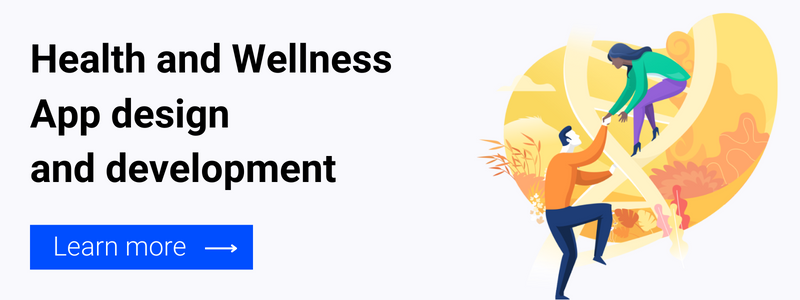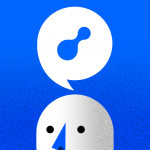
The wellness apps market
The revenue in the digital fitness & wellbeing apps segments is projected to top $23 billion in 2022 - that’s a 45% growth from 2020. In a recent survey, 71% of consumers said they’d like to have more access to digital tools that can help them monitor their health, diet, and exercise habits — as well as their stress levels — on a daily basis. People care much more about their wellbeing than before and they now have the tools to act on it.
If you’re looking to develop an app for this growing market segment, you might be wondering what key features will set your app apart from the competition.
What makes for a great health and wellness app? What are the most important factors when it comes to user adoption and loyalty? And how can you make sure your app has all the essential components that users want from their healthcare apps?
In this article, we’ll break down the 5 essential features for your Health and Wellness App so that you start with a solid foundation for success.
Best practices when developing health and wellness apps
Many business owners and product managers make the mistake of focusing too much on the features, without first setting up a proper focus and strategy for their product. The crucial thing to remember here is that users don’t see your product as a bunch of features brought together.
They judge your product based on the cumulative experience and value it brings to them.
So before jumping to the “Essential features” section, you might want to check out our recommendations on how to approach the features selection in the first place. Also, make sure you invest enough resources and research in User Experience design - it will pay out in the long run. Then, it’s good to know in which subcategory your app fits, so you can start thinking about features.
The most common types of wellness apps
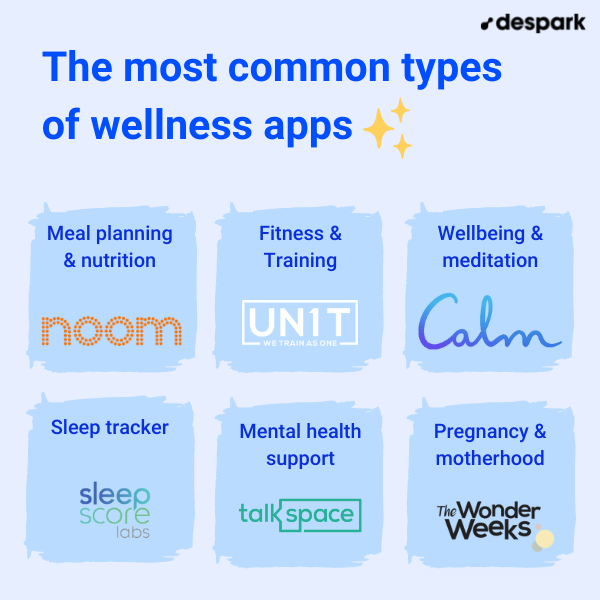
Мeal planning and nutrition
A meal planning and nutrition wellness app usually contains tools, such as calorie counter, recipes, progress tracker, tips on supplements and sports nutrition and aims to help users monitor and improve their eating habits.
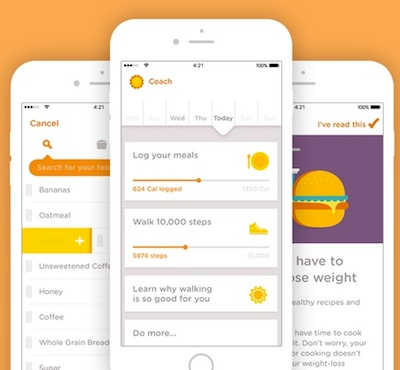
Image source: Mobile health news
Fitness and training
These kinds of fitness apps offer workout schedules and instructional videos. This type of app should be able to adjust to the user. For instance, it should be able to easily track the progress of the athlete and generate a customised training schedule based on the athlete's goals and preliminary data.
Wellbeing and meditation
Meditation apps assist users in understanding and improving their overall wellbeing and becoming more aware of their emotional health. They also work for users who are mentally fit and want to stay that way. Most of them offer breathing techniques, audio relaxations, as well as exercises for maintaining good habits and mood control.
 Image credit: Calm
Image credit: Calm
Sleep Trackers
Sleep trackers are applications that analyse the time and quality of your sleep by capturing your sounds, noises and movements during the night. These applications can also help users figure out what percentage of their sleep is spent in deep or light sleep.

Mental health support
They are designed specifically for people with mental health challenges. Most of the apps offer programs that resemble traditional forms of treatment, using techniques like mood monitoring and cognitive behavioural therapy. They are usually used as an additional tool to psychiatric or psychologist therapy.
Pregnancy and motherhood
Pregnancy and motherhood apps, part of the larger group of femtech products, usually focus on assisting women through their journey from conception to birth and in the postnatal period, by empowering them to explore maternity care choices, monitor their health or make friends with other mums.
Essential features for a wellness app
The features you choose to include will make or break your wellness app. That being said, avoid jumping into a long list of features without fully understanding whether their development is justified. Some features might look good on paper, but if only 10% of users find them useful, it doesn’t make sense to invest money in them in the first place. If you haven’t thought about a monetisation strategy for your wellness app, now is a good time to start.
Activity tracking
Make sure your app supports key information and metrics such as heart rate, blood pressure, stress level, sleep quality, food intake, and more. With this information, your users can make better decisions about their diet and exercise routine, and understand more about their overall health and fitness level.
Your app should also be able to connect with other apps and trackers, such as wearable devices, blood glucose and blood pressure monitors, scales, and other devices that track other metrics related to users overall health and wellness.
User journeys
User journeys usually consist of a collection of training videos and resources on a specific topic that can help users improve a specific skillset. For a meditation app, this might be visualisation techniques, whereas a training app might offer pathways for flexibility or strength development. By including gamification elements, like activity points or badges, users have another incentive to keep using your wellness app.

Image source: Balance
Third-party integrations
Your app should also be able to connect with other apps and trackers, such as wearable devices, blood glucose and blood pressure monitors, scales, and other devices that track other metrics related to users overall health and wellness. Enabling users to exchange and share information between different devices or services means they will be much more likely to make space for your app in their daily lives and habits.
Goal setting and planner
What brings all those different wellness apps under one roof is their goal to help users improve their overall health and wellbeing with measurable results.
Health and wellness apps should be more than just a log of your daily activities — they should be designed to help users build new habits and break bad ones. To keep users engaged and motivated to keep going, it’s essential that they are able to set goals themselves, input their actions, like drinking water or going for a walk, and track the progress through a planner. It is also beneficial to include a performance statistics over a set period for ultimate transparency.
One-on-one consultations
On-demand consultations are especially important for mental health apps like Ginger, where users can meet with health coaches and psychiatrists on the go. Access to mental health care is problem in many locations, and for those with a busy schedule, being able to talk to a specialist remotely is a huge benefit. Beware though, if this functionality is not part of your core offering, think twice before including it in your product, as it requires a huge investment from the whole organisation to maintain it.

Image source: BusinessWire
Push notifications
Push alerts in a wellness app should remind users to stay on track with their set goals, be it meals, drinking water, meditating or working out.
Such a feature can be highly useful for people who are extremely busy and may forget to exercise or eat a meal. Be careful though, if the notifications become too frequent, people may become irritated and avoid using the app altogether. To stay on the safe side, include an option for users to be able to modify push notifications as they see fit.
Personalisation
Personalisation could not really be named a features, because it’s more of a strategy of how the whole product behaves. But it nevertheless made it to the list because most of the other features in this list should be personalised. The ability to tailor the experience for each user is crucial to user engagement, user retention, and ultimately, the success of the app.
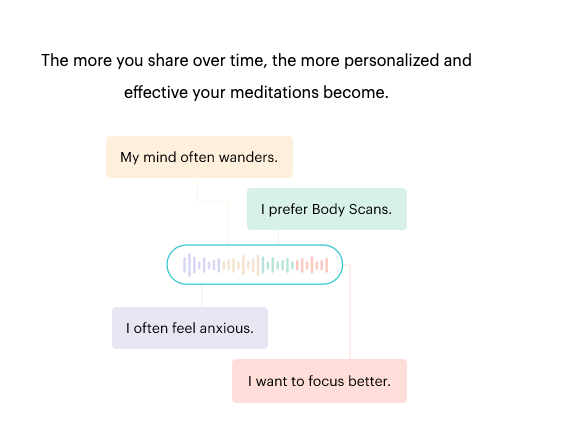
Image credit: Balance
Personalisation is a cultural shift, not just a trend — you begin your day scrolling through a newsfeed based on your preferred outlets, then head out the door with a personalised playlist coming through your headphones. And when it comes to health, wellness, and fitness, we could all benefit from an individualised approach, based on our body type, character, or even current mood.
The bottom line
Developing a wellness app is not an easy task, that’s for sure. But with the right partner by your side, your chances of making a successful product drastically improve.
As a leading health and wellness app development agency, we can help you build engaging human-centric experiences that deliver results and delight users. Check out our special development offerings for health and wellness applications below.

